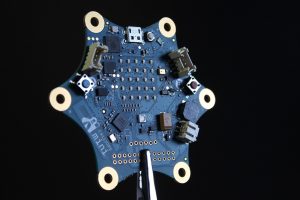Neural Processing Arrays: Brain-Like Computing
In today’s fast-paced world, the demand for high-performance computing is greater than ever before. With the increasing need for faster and more efficient computing systems, researchers and scientists are constantly striving to find innovative solutions. One such solution that has garnered significant attention in recent years is the development of neural processing arrays, which are designed to emulate the working of the human brain. This revolutionary technology has the potential to change the world of computing and has already shown promising results. In this article, we will delve deeper into the world of neural processing arrays and explore how brain-like computing can revolutionize the future of technology.
The Basics of Neural Processing Arrays
Neural processing arrays are specialized computer chips that are inspired by the structure and functioning of the human brain. These chips are built with millions of interconnected processors that work together to carry out complex computations. This makes neural processing arrays highly parallel and capable of handling large amounts of data at lightning-fast speeds. The design of these arrays closely resembles that of the human brain, with each processor, or neuron, performing a specific task and communicating with other neurons to complete a task.
The Emergence of Brain-Like Computing
The idea of mimicking the human brain in computing systems is not new. It dates back to the 1940s when researchers began exploring ways to replicate the brain’s ability to learn, recognize patterns, and make decisions. However, it was only in recent years that technological advancements have allowed for the realization of this concept. With the advent of artificial intelligence, neural processing arrays have emerged as a powerful technology that can surpass traditional computing systems in terms of speed, efficiency, and accuracy.
Why Brain-Like Computing is Important
One of the most significant advantages of brain-like computing lies in its ability to process vast amounts of data in parallel. Unlike traditional computing systems that handle data in a linear fashion, neural processing arrays can simultaneously process multiple streams of data, making them ideal for real-time applications. This feature has made brain-like computing an integral part of applications like self-driving cars, natural language processing, and image recognition.
Additionally, neural processing arrays are also highly energy-efficient. The human brain consumes a minimal amount of energy to perform complex tasks, and neural processing arrays mimic this characteristic. This makes them an attractive choice for developing energy-efficient computing systems that can significantly reduce power consumption and contribute to eco-friendly technology.
Applications of Neural Processing Arrays
The potential applications of neural processing arrays are limitless. From healthcare to finance, from gaming to transportation, this technology has the power to transform multiple industries. In the medical field, brain-like computing can be used for early disease detection, drug discovery, and personalized medicine. In finance, it can facilitate faster and more accurate data analysis for better investment opportunities. In the gaming industry, it can create more immersive and realistic gaming experiences. Furthermore, as we move towards a world of autonomous vehicles, brain-like computing will play a vital role in processing the massive amounts of data required for safe navigation.
In conclusion, neural processing arrays are at the forefront of modern technology and are rapidly shaping the future of computing. Their ability to replicate the working of the human brain has opened new doors for developing faster, more efficient, and more intelligent computing systems. With ongoing research and advancements, it is safe to say that brain-like computing will continue to pave the way for groundbreaking innovations in the years to come.








